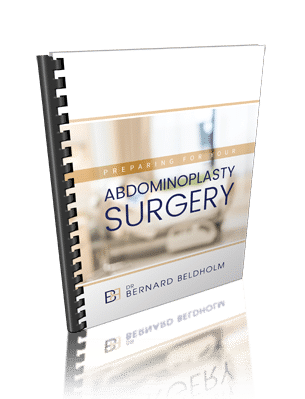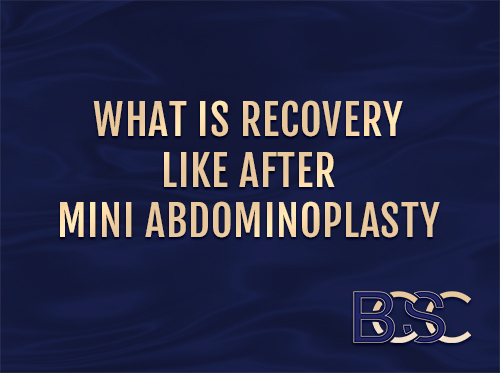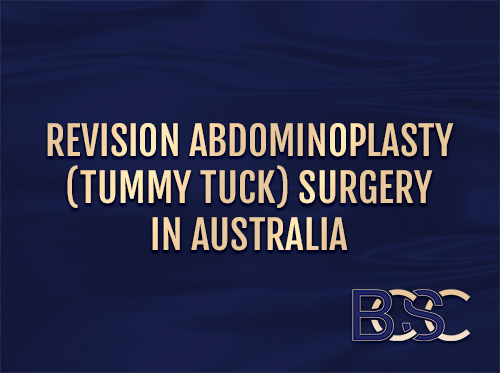Understanding the Risks & complications of Abdominoplasty Surgery
Abdominoplasty (often known as “tummy tuck surgery”) is an increasingly popular cosmetic procedure which removes excess fat and skin from the abdominal region while simultaneously repairing separated muscles. While this procedure can produce desirable results, it must be remembered that there may be risks involved as well.
Your surgeon should explain all potential risks and complications of abdominoplasty during your consultation, giving you time to ask any pertinent questions and gain clarity on any information provided. Surgeons from Body Contouring Surgery Clinic (BCSC) always offer second consultations at no additional charge.
At BCSC, your consultation will also include written information regarding any potential risks or complications of surgery, including more commonly-experienced complications associated with abdominoplasty procedures.
Abdominoplasty surgery carries with it many potential risks and side effects, the more common being:
- Seroma (fluid accumulation)
- Hematoma (blood accumulation)
- Infection at the incision site
- Blood Clots (deep vein thrombosis or pulmonary embolism)
- Lower Abdominal Numbness
could all present themselves as complications that make healing difficult for wounds.
Some more common complications

Let’s go over some of the most frequently seen complications after abdominoplasty surgery and how our clinic (BCSC) can assist you with recognizing, managing and avoiding them.
Seroma
An abdominoplasty creates an air pocket, prompting your body to fill this space with fluid, known as a seroma. There are various techniques that may reduce this risk of seroma formation during surgery, including using drains and closing off any potential pathways for fluid with plication stitches. At BCSC we typically prefer no-drain abdominoplasty procedures using plication stitches and tissue glue instead of drains.
Seromas can typically be treated in-office at BCSC using aspiration (needle and syringe to remove fluid), although this process may take several weeks before you see results. Surgery is rarely necessary.
Scarring
Scarring can be a side effect of abdominal plastic surgery procedures. This includes hypertrophic scars, widened scars and keloid scars.
Hematoma
A hematoma is an accumulation of blood within tissues, often following surgical procedures like abdominoplasty. If it is small enough, conservative measures may suffice, while larger hematomas may necessitate additional surgery in order to be surgically removed and cease the bleeding.
Post-operative infections
Post-operative infections following abdominoplasty may develop, typically superficial infections that can be easily managed with oral antibiotics. In more serious cases, hospitalisation may be required for intravenous antibiotics administration; or in the event of deeper infections requiring other forms of treatment like wound irrigation or even surgery.
Blood Clots
An abdominoplasty procedure can increase your risk of blood clots forming in your legs. Surgeons employ preventative measures, including anticoagulant medications (Clexane injections), TED stockings and calf compressors, to lower this risk.
Clots usually form in the deep veins of the legs and can lead to symptoms including pain, swelling and redness in those affected. If any of these signs arise it is crucial that medical assistance be sought immediately – this usually happens within one week following abdominoplasty surgery.
Wound healing challenges
After an abdominoplasty procedure, complications relating to wound care can arise and delay healing, leading to problems such as; Wound separation; necrotic skin; stitch sinuses; delayed wound healing, raised scars or hypertropic scarring (see list above).
Keloid Scars
For optimal healing results with Keloid scars, regular follow up appointments in Sydney or Newcastle with both our surgeon and wound nurse will be necessary. Early identification and management can significantly reduce any possible issues that might arise.
Numbness
After an abdominoplasty procedure it is not unusual for some degree of numbness to occur, typically in the lower abdomen, around the belly button and sometimes along the incision line. In most cases this will subside over 6-12 months; however in rare cases permanent numbness may persist.
Rare but potentially serious complications exist that should be monitored closely.
Extensive skin flap necrosis, anaphylactic reactions to an anaesthetic, severe bleeding requiring emergency surgery, chronic pain and permanent discoloration are the results.
Sub-1 percent risk for serious complications after abdominoplasty procedures is small and BCSC offers extensive post-op care should any arise. Therefore, it’s vital that post-operative instructions and checkups with your surgeon post procedure are closely adhered to; your surgeon can offer detailed advice about minimising risks of potential complication occurrence.
Example of Complications and Their Management
These examples are created by Dr Beldholm who is an experienced specialist surgeon. These are not real patients.
Superficial wound infection
Patient presents 7 days post abdominoplasty and reports redness, swelling and pain at her wounds that have not healed as expected. On examination she has a low grade temperature of 37.9 degree Celsius with red areas emanating from one wound. There is pain on palpation of the area.
Management: Treatment involves administering oral antibiotics, wound dressings and care, with regular visits to our office until the red area has subsided after 7 days of taking oral antibiotics.
Postoperative Haematoma
A post-weight loss patient underwent Abdominoplasty surgery to remove skin and fat from her lower abdomen. Following surgery she reported increasing pain and swelling; on examination the surgeon discovered extensive bruising throughout her lower abdomen with 20 cm diameter painful swellings that contain significant collections of blood. An ultrasound confirmed a haematoma.
Patient is taken back into surgery where an incision was opened up and 400ml of red blood and clots was extracted from her wound, without any obvious bleeding. Drains were installed and monitored over four days at hospital before making a full recovery.
FAQ
Is a Tummy Tuck High Risk?
Tummy tuck surgery is considered major surgery, yet generally **; most complications are minor while more serious problems have occurred in 1-2% of cases.
Are Abdominoplasty Procedures Worse than C-Sections?
This is a common question among moms seeking abdominoplasty after previous cesarean sections. They want a comparison of the 2 operations.
Unfortunately, every surgical procedure involves some risk. An abdominoplasty generally involves more dissection. So the risks of this operation are different from a C-Section. Abdominoplasty generally has a longer recovery in Dr Beldholm’s experience.
Dr. Bernard Beldholm shares his perspectives on complications following abdominoplasty surgery.
Abdominoplasty can be an extremely effective and ** procedure when performed by a qualified and experienced specialist surgeon like Dr. Beldholm, who has performed hundreds of abdominoplasty operations with excellent results over many years. There may be risks involved, which must be carefully considered prior to proceeding with surgery.



